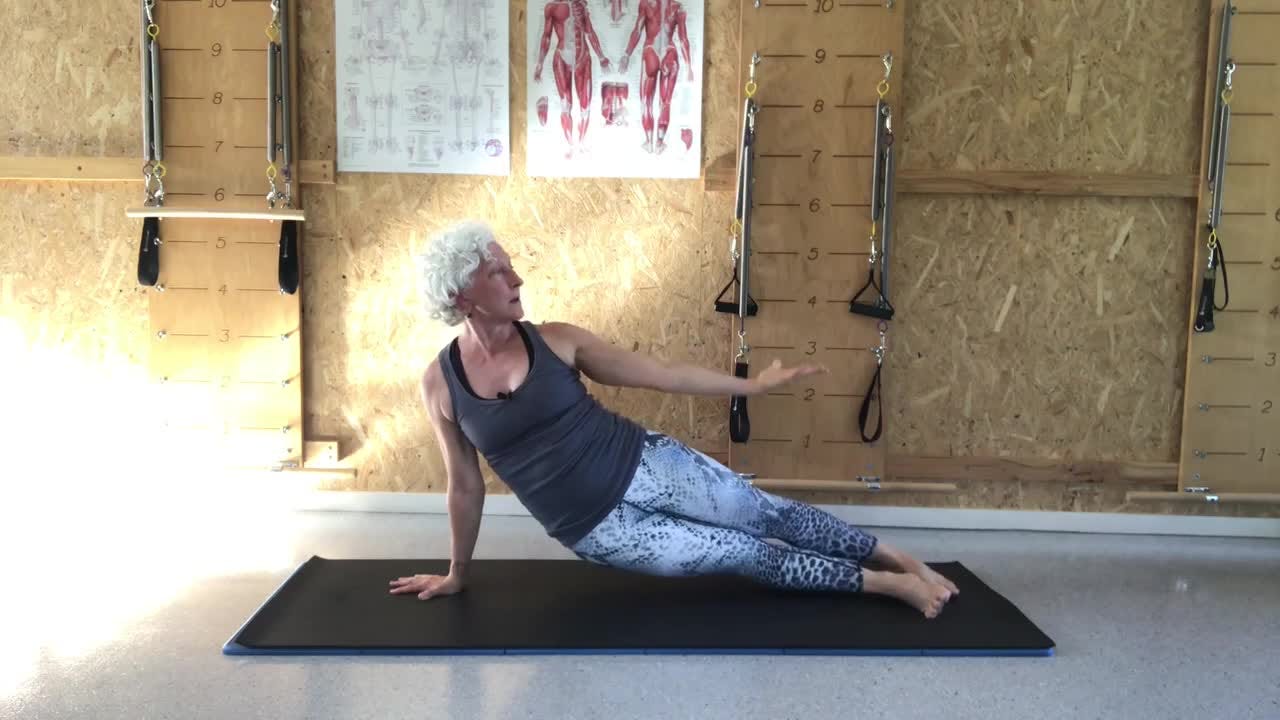Pilates Exercise Dive: Side Bend (with a Side Plank appetiser)
You’re only 3 side plank variations away from a better Pilates Side Bend
SIDE BEND
is one of Joseph Pilates’ original 34 Matwork exercises and it comes towards the end at #28.
Not all exercises at the end of the flow are on the more advanced side, for example Seal, which is a basic to beginning exercise, is #30 but Side Bend belongs towards the end. I consider it an intermediate to advanced level exercise mostly because of the shoulder strength and shoulder girdle/torso connection necessary to perform it safely.
In the Side Bend the support is on only one hand and, depending on your ankle flexibility, some part of the soles of your feet,
Generally the less of your body that’s supported by the mat the harder the exercise is to perform!
Today’s blog post comes courtesy of some of my Mat class clients. They wanted a break down of the forearm planks that we did in this week’s classes but I always like to look at the big picture of the Pilates Method and link what I’m actually teaching to the original work and my original training way back in the early noughties. You can thank them later ;)
Necessary Skills for the Full Side Bend
Wrist strength
The ability and strength to let the ribcage move around the shoulder blade while at the same time the shoulder blade moves around the ribcage
Good proprioception (aka the ability to know where your body is in space)
The strength to lift the hips up off the mat
Ankle mobility
Eccentric strength in the arm/shoulder/torso as the hips lower down
The knowledge of how to connect the arm into the torso
There are some pretty sophisticated skills on that list and the most challenging are probably #2 & #6 which are especially intertwined.
You’ll use #2 - the complex movement of the blade and ribcage - while you’re working on #6 - holding up the weight of your body as you lower it so that you don’t collapse and injure your shoulder.
Where the shoulder blade (the scapula) meets the backside of the ribcage is known as the Scapulothoracic Junction. Here’s a great link that talks about it way more clearly than I could: https://www.kenhub.com/en/library/anatomy/scapulothoracic-joint
Keeping the muscles strong that support this quasi non traditional ‘joint’ which is not a joint, is so important.
The Forearm Side Plank and the Straight Body Side Plank
These are the more remedial exercises we add to our Pilates practice to build strength and awareness in a side supported position. They’re a step up from Side Leg Kicks and can help us learn how to get strong enough to perform a full Side Bend.
They’re our go to building blocks so that eventually Side Bend can be done with a measure of success and aplomb (don’t you just love that word? It’s got a roundness that sounds yummy and that’s exactly how you want your Side Bend to feel - yummy!)
The Progression
We start with Forearm Side Plank Bent Knees, then move to a Forearm Side Plank and for fun can layer in variations of both.
Then we work up to a Side Plank on one hand.
Finally we put it all together for the Side Bend which adds lateral flexion when the hips are up as well as when the hips are lowering and floating just off the mat.
For the full tutorial don’t forget to watch the video, it’s just over 7 minutes.
**These photos are stills from the embedded video and I because I was talking throughout the whole thing there might be some slightly weird looking faces - please ignore**
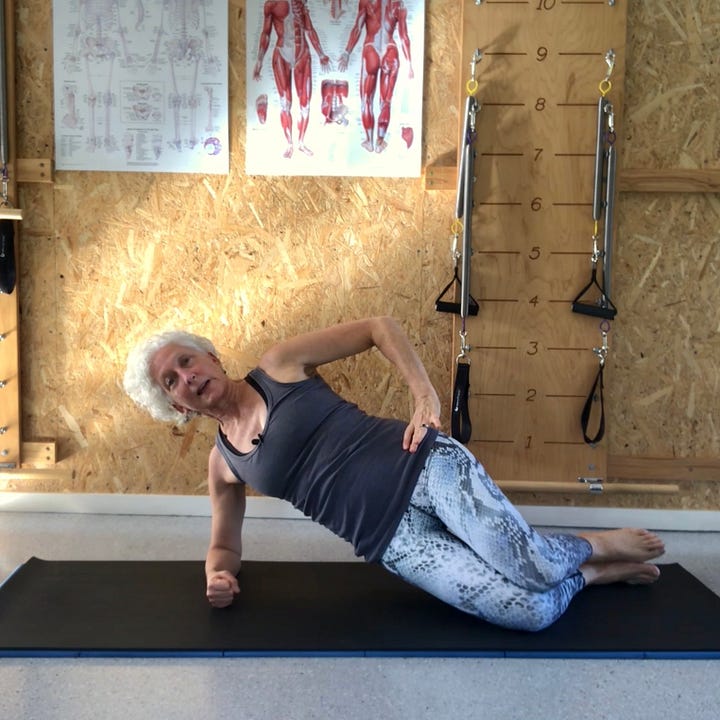
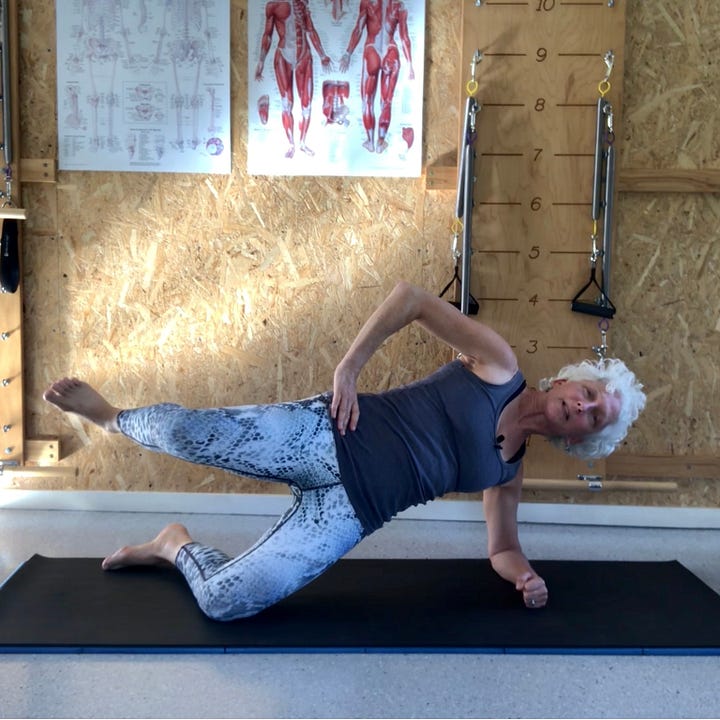
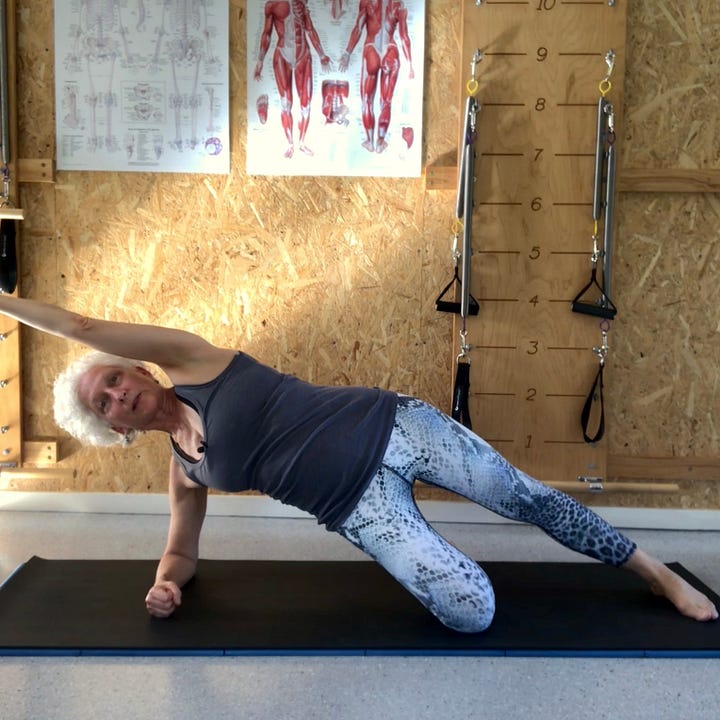

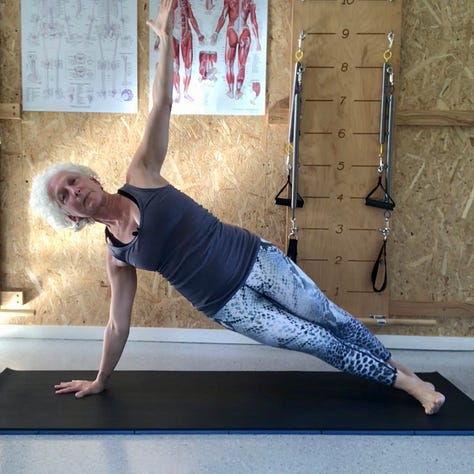
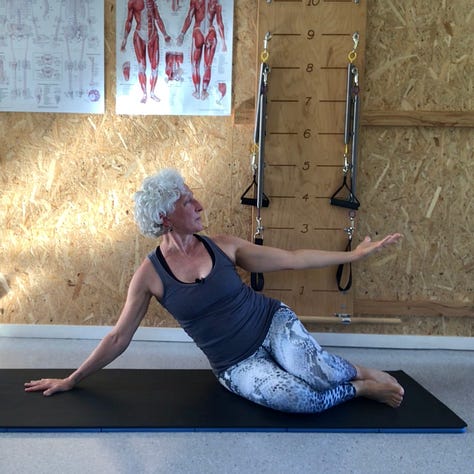
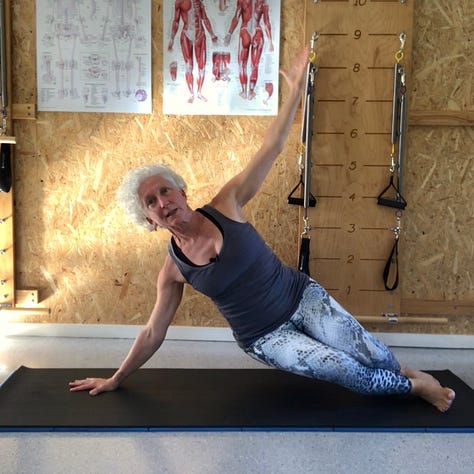


…To Finish One Set of the exercise you would continue and…
Lift right back up into the Side Bend
Lower back down with straight legs keeping the bottom hip from touching down (if you can)
Lift up to Side Bend one more time before
Finally lowering all the way down, softening the knees while shifting the pelvis back towards the feet so you can sit on the hip where you began!
And then you’d repeat the whole thing two more times!
Last Reminders
Lateral flexion (aka side bending) is one of the movements of the spine and for healthy movement we want it in our repertoire (other spinal movements? flexion, extension & rotation)
As you lift your hips into the full Side Bend push with your feet and use your strong legs to connect into your pelvis & torso
Squeeze your inner thighs at the top and as you lower with straight legs (hard to tell on me due to my bowed legs and wide set hips but I assure you it’s what I’m doing :)
Use your lat muscle like mad & think of pulling it into the midline of your body
The relationship between your shoulder blade and ribs should feel like two discs that smoothly rotate in opposite directions
Thanks for reading, xBec
Be well and remember what Joseph Pilates said:
The information contained above is provided for information purposes only. The contents of this blog are not intended to amount to advice and Rebecca Forde disclaims all liability and responsibility arising from any reliance placed on any of the contents of this post



